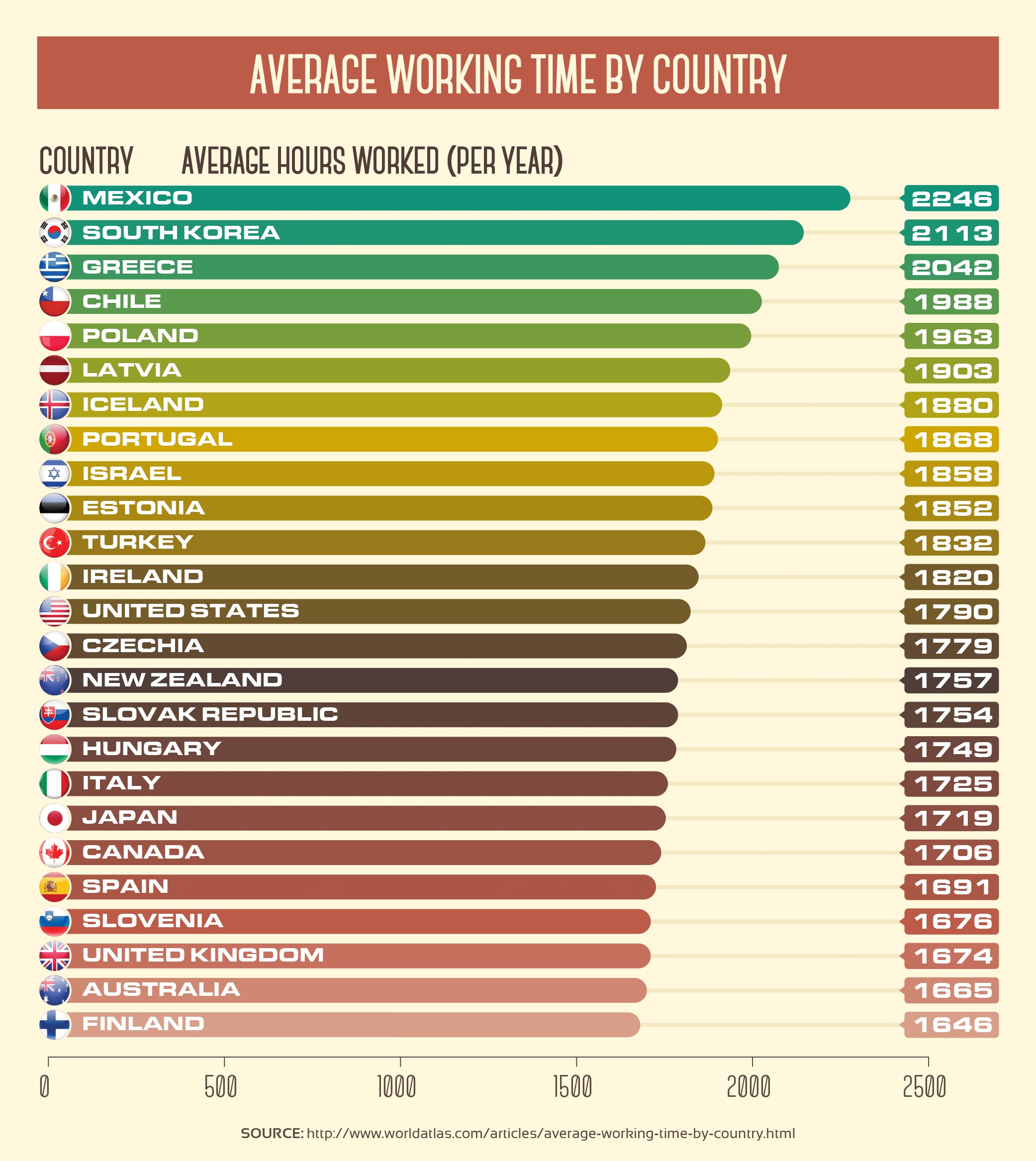
Actual hours reflect the amount of labour input, and the statistics are used to compute labour productivity. Actual hours worked: Refers to the actual hours that an employed person spent on work activities, regardless of whether the hours are regular in nature or whether they are paid for.As usual hours cover one's typical weekly work schedule, they can be used to examine quality of work. Usual hours worked: Refers to the hours that an employed person typically works in any given week, regardless of whether they are paid for.Statistics on paid hours are used as a gauge of the level of economic activities and working conditions of the various industries. It includes paid hours that are not worked e.g. Paid hours worked: Refers to the hours for which employees receive payment from their employers.MRSD publishes three statistical measures of hours worked, which are consistent with the concepts and definitions recommended by the International Labour Organisation (ILO).
#Average work hours per year series
This is part of our series highlighting unique work schedules.Statistics on hours worked are monitored because the number of hours worked has an impact on workers' well-being and is a measure of labour input that can be used to produce other economic indicators such as labour productivity. Eight-hour shifts for five days per week may not be the best for your work or your company. Ever since then, the 40-hour, five-day work week has persisted as the standard full-time week for employees.īut the world has changed in the last 100 years. In 1926, Henry Ford popularized the 40-hour work week for Ford assembly plants. This is the annual work hours (provided by OECD data) divided by 52. Keep in mind: this figure includes all types of workers and work, so it is not the average full-time work week for that country. doi: 10.1787/47be1c78-en (Accessed on )) Average Per Week Actual hours worked include regular work hours of full-time, part-time and part-year workers, paid and unpaid overtime, hours worked in additional jobs, and exclude time not worked because of public holidays, annual paid leave, own illness, injury and temporary disability, maternity leave, parental leave, schooling or training, slack work for technical or economic reasons, strike or labour dispute, bad weather, compensation leave and other reasons.” (Source: OECD (2022), Hours worked (indicator). “Average annual hours worked is defined as the total number of hours actually worked per year divided by the average number of people in employment per year. This indicator is measured in terms of hours per worker per year and is from 2020 (or the latest year on record for the country). If your rate is 10 an hour, you'd multiply 10 by 30 hours to get a total of 300 per week. Multiply your average number of hours worked per week by your hourly rate. value of imports of goods and services.” (Source: IMF) Annual Work Hours For example, if some weeks you work 40 hours and other weeks you work 20 hours, your average work hours per week would be 30. value of exports of goods and services), less the f.o.b. Expenditure-based GDP is total final expenditures at purchasers’ prices (including the f.o.b. dollars using market exchange rates (yearly average). “Values are based upon GDP in national currency converted to U.S. Values are based in billions and US Dollars. Here are the average work hours per week for every country. Use the links below to jump to a section that interests you the most: Therefore, the data should be used as a guide for working hours per week across the whole working population, not just the full-time workers. If that person actually took four weeks of time off, their typical work week would actually be 41.7 (2,000 divided by 48 weeks) with four weeks off.

For example, if someone worked 2,000 hours in a year, we would show the average week as 38.5 (2,000 divided by 52 weeks). In addition, this data is “actual hours worked” so it does not account for time off (holidays, vacation days, leaves, etc.). (Go to these articles if you are looking for how many work hours, work days, or work weeks there are in a year or this one for 2023 specifically for a standard work week.) For example, if half the country worked 40 hours per week as full-time employees and half worked 20 as part-time employees, the weekly average would show 30 (even though the standard full-time work week is 40 for that country). The average you see for each country includes hours for full-time, part-time, and self-employed people, so it should not be used as the average full-time work week.

Therefore, the number of work days in a year is going to be 260 days. To get to average working hours per week by country, I divided the annual hours by 52 weeks. This means that there are 2080 work hours within a year. That is the best dataset available for working hours. But the OECD collects the average annual hours worked for each country by taking the total number of hours actually worked per year divided by the average number of people in employment per year. Measuring working hours is hard to do across a company, let alone all of the countries of the world.


 0 kommentar(er)
0 kommentar(er)
